-
 Bitcoin
Bitcoin $83,456.2183
-2.10% -
 Ethereum
Ethereum $1,581.6766
-3.19% -
 Tether USDt
Tether USDt $1.0000
0.01% -
 XRP
XRP $2.0754
-3.06% -
 BNB
BNB $581.5622
-0.87% -
 Solana
Solana $125.4498
-3.64% -
 USDC
USDC $1.0000
0.01% -
 TRON
TRON $0.2517
-0.62% -
 Dogecoin
Dogecoin $0.1544
-3.43% -
 Cardano
Cardano $0.6075
-5.31% -
 UNUS SED LEO
UNUS SED LEO $9.3772
-0.61% -
 Chainlink
Chainlink $12.2969
-2.78% -
 Avalanche
Avalanche $18.7882
-6.65% -
 Stellar
Stellar $0.2347
-2.65% -
 Toncoin
Toncoin $2.8697
-1.77% -
 Shiba Inu
Shiba Inu $0.0...01167
-2.16% -
 Sui
Sui $2.0829
-4.50% -
 Hedera
Hedera $0.1570
-5.62% -
 Bitcoin Cash
Bitcoin Cash $319.7787
-2.88% -
 Litecoin
Litecoin $75.6696
-3.49% -
 Polkadot
Polkadot $3.5301
-3.64% -
 Dai
Dai $1.0000
0.01% -
 Bitget Token
Bitget Token $4.2258
-1.94% -
 Hyperliquid
Hyperliquid $15.0950
-6.64% -
 Ethena USDe
Ethena USDe $0.9991
0.00% -
 Pi
Pi $0.6072
-18.52% -
 Monero
Monero $216.6818
2.44% -
 Uniswap
Uniswap $5.1792
-3.47% -
 OKB
OKB $52.2750
0.70% -
 Pepe
Pepe $0.0...07035
-3.66%
What is Swarm storage network for blockchain?
Swarm, part of Ethereum, offers scalable, secure data storage and distribution, enhancing blockchain's resistance to censorship and improving data retrieval efficiency.
Apr 13, 2025 at 01:42 pm
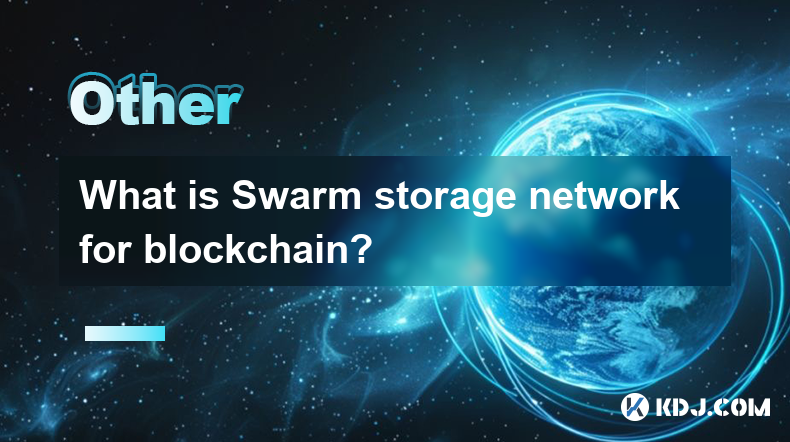
Swarm is a decentralized storage network designed to provide a scalable and secure solution for storing and distributing data on the blockchain. It is part of the Ethereum ecosystem, aiming to create a distributed web that is resistant to censorship and offers high availability. In this article, we will explore the key features of Swarm, its architecture, how it works, and its benefits for the blockchain community.
What is Swarm?
Swarm is a peer-to-peer storage and communication system that operates on the Ethereum blockchain. It is designed to store and distribute data in a decentralized manner, ensuring that no single entity has control over the data. Swarm aims to create a distributed web where data is stored across multiple nodes, making it highly available and resistant to censorship.
The primary goal of Swarm is to provide a scalable solution for storing and retrieving data on the blockchain. It achieves this by breaking down data into smaller chunks and distributing them across the network. This approach not only enhances the security of the data but also improves the efficiency of data retrieval.
Architecture of Swarm
The architecture of Swarm is based on a distributed hash table (DHT) and a content-addressed storage system. The DHT allows nodes in the network to locate and retrieve data efficiently, while the content-addressed storage system ensures that data is stored and retrieved based on its content rather than its location.
In Swarm, data is divided into chunks, and each chunk is assigned a unique hash. These hashes are used to locate and retrieve the chunks from the network. The network is composed of nodes that store and serve these chunks, and each node is responsible for a specific range of hashes.
Swarm uses a kademlia-like routing algorithm to ensure that data is distributed evenly across the network and can be retrieved quickly. This algorithm helps in maintaining the balance of the network and ensures that data is always available to users.
How Swarm Works
Swarm operates by breaking down data into smaller chunks and distributing them across the network. When a user wants to store data on Swarm, the data is first divided into chunks, and each chunk is assigned a unique hash. These hashes are then used to store the chunks on different nodes in the network.
To retrieve data from Swarm, a user sends a request to the network with the hash of the desired chunk. The network then uses the DHT to locate the node that stores the chunk and retrieves it. Once all the chunks are retrieved, they are reassembled to form the original data.
Swarm also includes a mechanism for incentivizing nodes to store and serve data. Nodes that store and serve data are rewarded with Swarm's native token, BZZ. This incentivization mechanism ensures that the network remains healthy and that data is always available to users.
Benefits of Swarm for Blockchain
Swarm offers several benefits for the blockchain community. One of the main benefits is its ability to provide a scalable and secure solution for storing and distributing data. By breaking down data into smaller chunks and distributing them across the network, Swarm ensures that data is highly available and resistant to censorship.
Another benefit of Swarm is its ability to improve the efficiency of data retrieval. By using a content-addressed storage system and a kademlia-like routing algorithm, Swarm ensures that data can be retrieved quickly and efficiently. This is particularly important for blockchain applications that require fast and reliable access to data.
Swarm also offers a high level of security for stored data. By distributing data across multiple nodes, Swarm ensures that no single entity has control over the data, making it resistant to attacks and censorship. Additionally, the use of hashes to locate and retrieve data adds an extra layer of security, as it is difficult to tamper with the data without being detected.
Use Cases of Swarm
Swarm has a wide range of use cases within the blockchain ecosystem. One of the primary use cases is decentralized web hosting. By storing and serving web content on Swarm, developers can create websites that are resistant to censorship and highly available.
Another use case for Swarm is decentralized file storage. Users can store their files on Swarm and access them from anywhere in the world, without relying on centralized storage providers. This is particularly useful for users who value privacy and security.
Swarm can also be used for decentralized data backup. By storing data on Swarm, users can ensure that their data is safe and can be recovered in case of data loss. This is particularly important for businesses and individuals who need to protect their data from loss or corruption.
Getting Started with Swarm
To get started with Swarm, users need to set up a Swarm node and connect it to the network. Here are the steps to set up a Swarm node:
Download and install the Swarm client: The first step is to download and install the Swarm client on your computer. The Swarm client is available for Windows, macOS, and Linux.
Configure the Swarm node: Once the Swarm client is installed, you need to configure the node. This involves setting up the node's identity, specifying the network to connect to, and configuring any additional settings.
Start the Swarm node: After configuring the node, you can start it by running the Swarm client. The node will then connect to the Swarm network and start storing and serving data.
Interact with Swarm: Once the node is running, you can interact with Swarm using the Swarm API. The Swarm API allows you to store and retrieve data from the network, as well as perform other operations such as checking the status of the node and managing the node's configuration.
Frequently Asked Questions
Q: How does Swarm ensure data availability?
A: Swarm ensures data availability by distributing data across multiple nodes in the network. Each node is responsible for storing and serving a specific range of data chunks, and the network uses a kademlia-like routing algorithm to ensure that data is evenly distributed and can be retrieved quickly.
Q: Can Swarm be used for private data storage?
A: Yes, Swarm can be used for private data storage. Users can encrypt their data before storing it on Swarm, ensuring that only authorized users can access it. Additionally, Swarm's decentralized nature ensures that no single entity has control over the data, adding an extra layer of privacy and security.
Q: How does Swarm handle data redundancy?
A: Swarm handles data redundancy by replicating data chunks across multiple nodes in the network. This ensures that if one node goes offline, the data can still be retrieved from other nodes. The level of redundancy can be configured by users, allowing them to balance between data availability and storage costs.
Q: What are the costs associated with using Swarm?
A: The costs associated with using Swarm include the cost of storing data on the network and the cost of retrieving data. Users are charged in BZZ, Swarm's native token, for storing and retrieving data. The exact costs depend on factors such as the size of the data and the level of redundancy required.
Disclaimer:info@kdj.com
The information provided is not trading advice. kdj.com does not assume any responsibility for any investments made based on the information provided in this article. Cryptocurrencies are highly volatile and it is highly recommended that you invest with caution after thorough research!
If you believe that the content used on this website infringes your copyright, please contact us immediately (info@kdj.com) and we will delete it promptly.
- YEREVAN (CoinChapter.com) — Bo Hines Confirms Trump Administration Is Considering Tariff Revenues to Fund a National Bitcoin Reserve
- 2025-04-16 12:15:12
- Ecosystem Tokens Like WhiteBIT Token (WBT) Are Drawing Increased Attention
- 2025-04-16 12:15:12
- The U.S. Dollar Index Remains Under Pressure as Donald Trump's Tariffs Push Investors to Other Currencies
- 2025-04-16 12:10:13
- Pa. man could face 6 years in prison for underreporting millions of dollars earned from selling CryptoPunks NFTs
- 2025-04-16 12:10:13
- BlockDAG Beta Testnet Goes Live with $60K in Real Rewards
- 2025-04-16 12:05:14
- BlockDAG Emerges as the Leading Crypto to Buy Now, Combining a 600% Presale Bonus with Proven Tech
- 2025-04-16 12:05:14
Related knowledge

Can the application of blockchain in supply chain finance bring benefits?
Apr 15,2025 at 04:00pm
Can the application of blockchain in supply chain finance bring benefits? The integration of blockchain technology into supply chain finance has garnered significant attention in the cryptocurrency and financial sectors. This article explores how blockchain can potentially revolutionize supply chain finance, detailing its benefits and providing a compre...
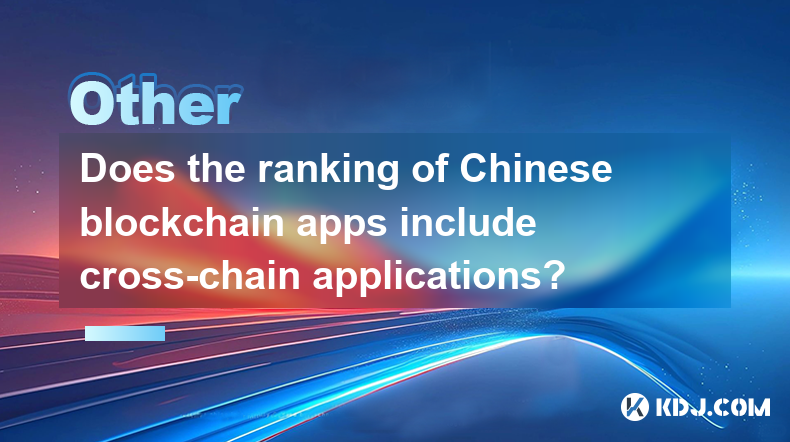
Does the ranking of Chinese blockchain apps include cross-chain applications?
Apr 14,2025 at 04:00pm
The ranking of Chinese blockchain apps is a comprehensive evaluation that takes into account various aspects such as user base, transaction volume, and technological innovation. A pertinent question arises regarding whether these rankings include cross-chain applications. Cross-chain applications, which allow different blockchain networks to interact an...
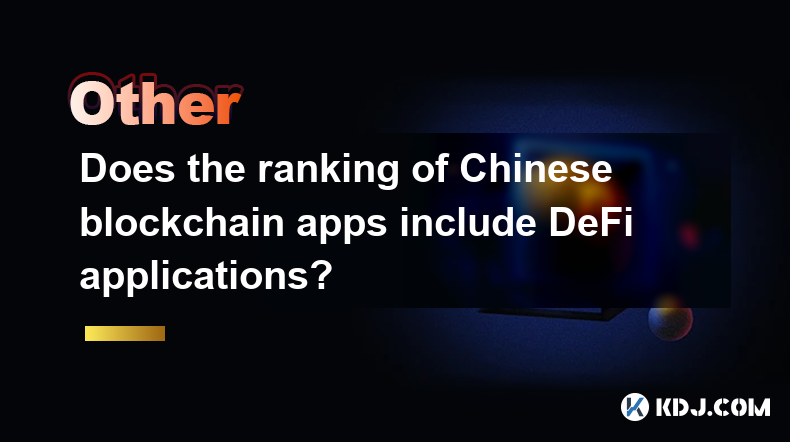
Does the ranking of Chinese blockchain apps include DeFi applications?
Apr 15,2025 at 06:57am
The ranking of Chinese blockchain apps is a comprehensive list that showcases the most popular and influential applications within the cryptocurrency ecosystem. One question that often arises is whether these rankings include DeFi applications. To answer this, we need to delve into the specifics of how these rankings are compiled and what types of appli...
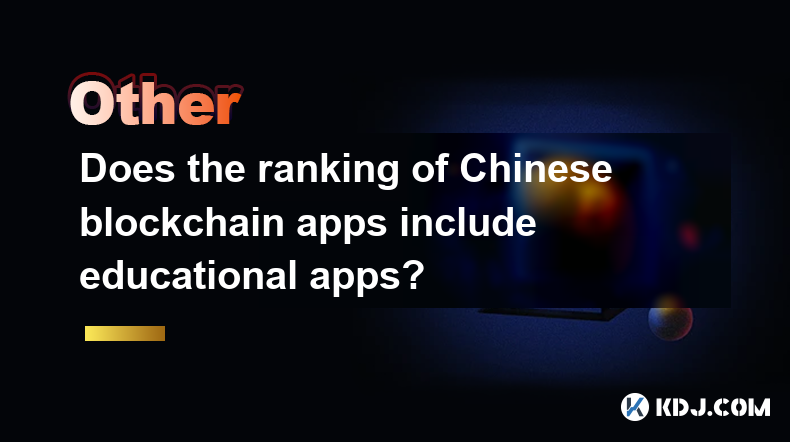
Does the ranking of Chinese blockchain apps include educational apps?
Apr 16,2025 at 03:35am
The ranking of Chinese blockchain apps often includes a variety of categories, from finance and gaming to social networking and beyond. One question that frequently arises is whether these rankings include educational apps. To address this, we need to delve into the specifics of how blockchain apps are categorized and ranked in China, and whether educat...
Does the ranking of Chinese blockchain apps include enterprise-level applications?
Apr 15,2025 at 06:42am
The ranking of Chinese blockchain apps often includes a variety of applications, ranging from consumer-focused to enterprise-level solutions. Understanding the scope and criteria for these rankings is essential to determine if enterprise-level applications are included. This article delves into the specifics of how Chinese blockchain app rankings are co...
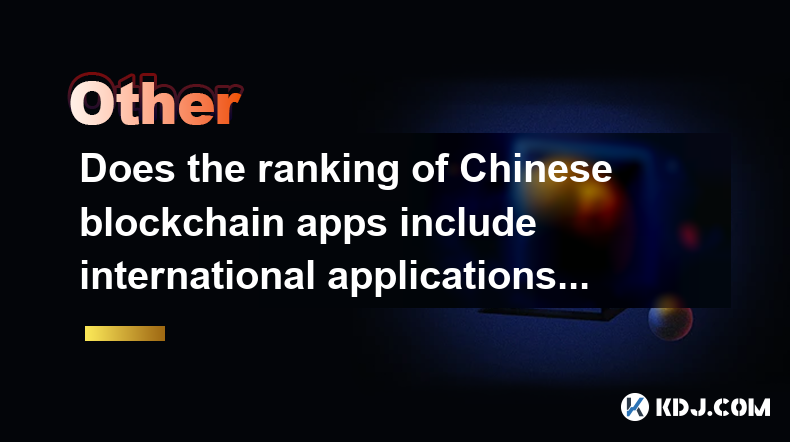
Does the ranking of Chinese blockchain apps include international applications?
Apr 16,2025 at 04:07am
The ranking of Chinese blockchain apps primarily focuses on applications developed and predominantly used within China. However, the question of whether these rankings include international applications is an intriguing one that warrants a detailed exploration. In this article, we will delve into the criteria used for ranking Chinese blockchain apps, th...

Can the application of blockchain in supply chain finance bring benefits?
Apr 15,2025 at 04:00pm
Can the application of blockchain in supply chain finance bring benefits? The integration of blockchain technology into supply chain finance has garnered significant attention in the cryptocurrency and financial sectors. This article explores how blockchain can potentially revolutionize supply chain finance, detailing its benefits and providing a compre...

Does the ranking of Chinese blockchain apps include cross-chain applications?
Apr 14,2025 at 04:00pm
The ranking of Chinese blockchain apps is a comprehensive evaluation that takes into account various aspects such as user base, transaction volume, and technological innovation. A pertinent question arises regarding whether these rankings include cross-chain applications. Cross-chain applications, which allow different blockchain networks to interact an...

Does the ranking of Chinese blockchain apps include DeFi applications?
Apr 15,2025 at 06:57am
The ranking of Chinese blockchain apps is a comprehensive list that showcases the most popular and influential applications within the cryptocurrency ecosystem. One question that often arises is whether these rankings include DeFi applications. To answer this, we need to delve into the specifics of how these rankings are compiled and what types of appli...

Does the ranking of Chinese blockchain apps include educational apps?
Apr 16,2025 at 03:35am
The ranking of Chinese blockchain apps often includes a variety of categories, from finance and gaming to social networking and beyond. One question that frequently arises is whether these rankings include educational apps. To address this, we need to delve into the specifics of how blockchain apps are categorized and ranked in China, and whether educat...

Does the ranking of Chinese blockchain apps include enterprise-level applications?
Apr 15,2025 at 06:42am
The ranking of Chinese blockchain apps often includes a variety of applications, ranging from consumer-focused to enterprise-level solutions. Understanding the scope and criteria for these rankings is essential to determine if enterprise-level applications are included. This article delves into the specifics of how Chinese blockchain app rankings are co...

Does the ranking of Chinese blockchain apps include international applications?
Apr 16,2025 at 04:07am
The ranking of Chinese blockchain apps primarily focuses on applications developed and predominantly used within China. However, the question of whether these rankings include international applications is an intriguing one that warrants a detailed exploration. In this article, we will delve into the criteria used for ranking Chinese blockchain apps, th...
See all articles























































































